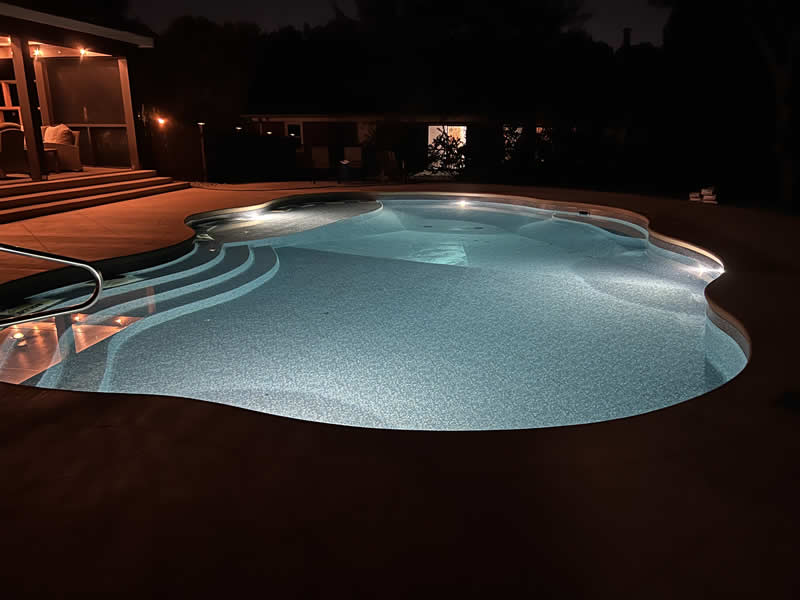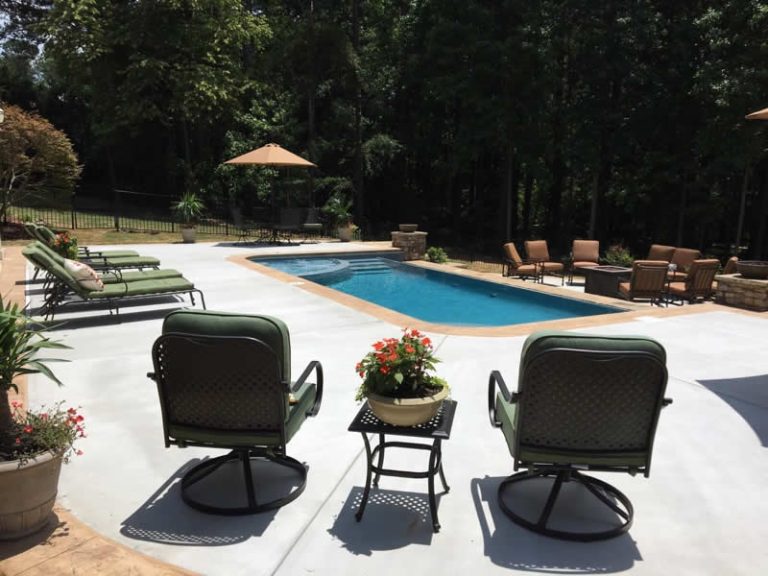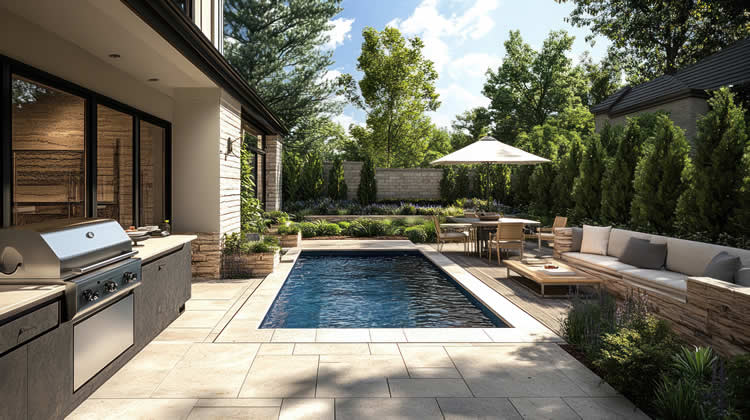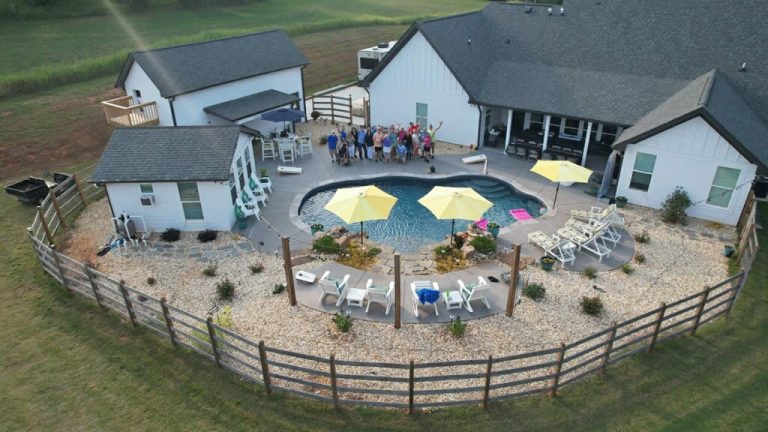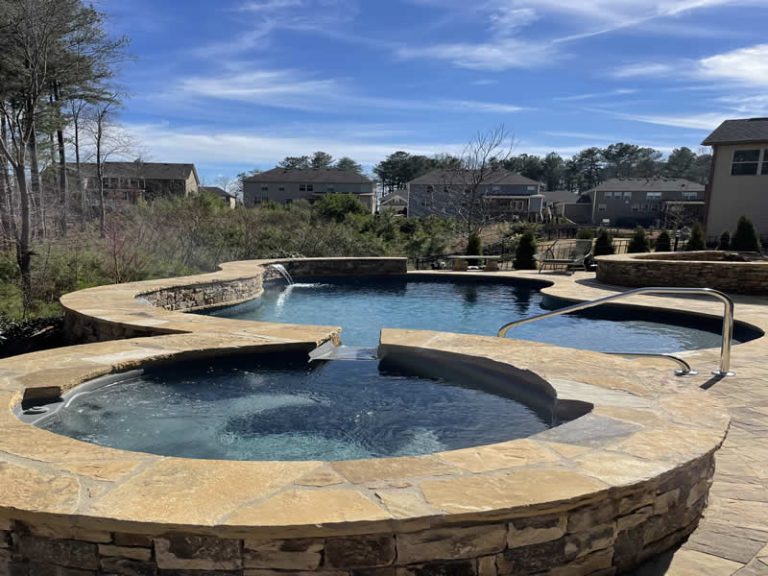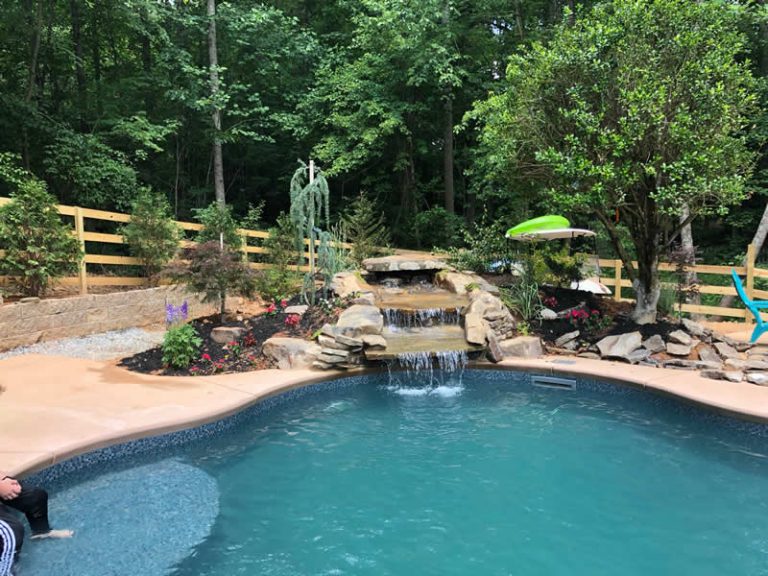Outdoor Lighting for Pools: Ambiance, Safety, and Energy Efficiency
There’s something special about swimming at night. The sound of crickets, the reflection of soft light on the water — it turns your backyard into another world. But the right lighting isn’t just about looks. For Georgia homeowners, it’s about striking the perfect balance between ambiance, safety, and efficiency in a climate that swings from humid summers to stormy nights.
Lighting can make a small pool feel like a resort, guide guests safely after dark, and even lower your electric bill when done right. The key is choosing fixtures and placement that work with your space, not against it.
Setting the Mood: Ambiance That Feels Intentional
Think of lighting like the soundtrack to your backyard. You don’t always notice it when it’s done well — it just feels right. The goal isn’t to flood everything with brightness; it’s to layer subtle light that enhances the atmosphere.
Start by deciding what mood you want to create:
- Relaxed retreat: Use soft, warm tones (2700–3000K) to make the area inviting and calm.
- Entertaining space: Brighter, focused lights near seating and cooking areas.
- Elegant resort feel: Underwater LEDs combined with low-voltage landscape lights to highlight textures and architecture.
Modern LED pool lighting allows for color-changing effects, but restraint is key. A touch of aqua or amber can add drama — a rainbow light show every night? Not so much.
Safety First: Lighting That Protects and Guides
A well-lit pool area isn’t just about beauty. It’s about preventing slips, trips, and late-night surprises.
Key Safety Lighting Zones:
- Steps and entry points: Install small, recessed lights to guide footing.
- Pathways: Low-voltage stake lights or paver lights prevent missteps without glare.
- Edges and coping: Subtle perimeter lighting helps define the pool boundary.
- Water features: Soft illumination for waterfalls or fountains enhances both safety and serenity.
If you have kids or guests swimming at night, ensure underwater lighting is bright enough for visibility across the entire pool. Modern LEDs can provide crisp, even coverage with minimal energy draw.
The Georgia Challenge: Heat, Humidity, and Weatherproofing
Georgia’s climate is hard on electrical components. Between rain, humidity, and the occasional lightning storm, you need fixtures rated for outdoor use — look for UL Wet Location or IP68 ratings.
Stainless steel or powder-coated aluminum housings resist corrosion, while sealed gaskets keep moisture out. Avoid cheap fixtures — they might look fine for a season, but moisture intrusion will have you replacing bulbs faster than you think.
For wiring, always use a licensed electrician or pool lighting specialist. Outdoor power needs proper grounding and GFCI protection, especially near water.
Energy Efficiency: Save Watts Without Sacrificing Style
Lighting technology has come a long way. If you’re still using halogen or incandescent pool lights, you’re burning through both energy and lifespan.
Switching to LEDs can cut power use by up to 80%, with bulbs lasting 25,000–50,000 hours. That’s years of illumination with almost no maintenance.
Even better, smart lighting systems can be integrated into pool automation apps — letting you dim lights, change colors, or set schedules right from your phone. Many Georgia homeowners pair these with solar-powered path lights or motion sensors to save even more energy.
Energy Tips for Georgia Homes:
- Choose warm white LEDs (2700–3000K) for efficiency and comfort.
- Use timers or automation to shut lights off after midnight.
- Consider solar lights for garden and pathway accents — they thrive in Georgia’s long sunny days.
- Clean fixtures twice a year to remove pollen and dust that reduce brightness.
Lighting Placement: Design With Purpose
A great lighting design uses contrast. Brightening every corner creates glare; strategic placement adds depth and visual drama.
- Highlight key features: Illuminate waterfalls, planters, or architectural walls.
- Use reflection: Aim soft lights across the water’s surface to double the visual effect.
- Layer heights: Mix in-ground lights, mid-level fixtures, and overhead sources for natural balance.
- Hide your sources: Conceal fixtures behind landscaping or under coping for a polished look.
You’re not lighting an airport runway — you’re curating an experience.
Seasonal Maintenance
Georgia’s mix of pollen, rain, and humidity means outdoor lights need a little seasonal attention.
- Spring: Wipe lenses clean of yellow pollen film and test GFCIs before swim season.
- Summer: Watch for condensation buildup inside lenses — it’s a sign of a failing seal.
- Fall: Clear debris and leaves that collect around fixtures.
- Winter: Check timers and automation settings as daylight hours shift.
Regular checks keep your lighting consistent, safe, and efficient all year long.
Frequently Asked Questions
Q: Are LED pool lights worth the upgrade?
Yes. They use a fraction of the power, last 10x longer, and offer better color consistency and brightness control.
Q: Can I install lighting myself?
For landscape lighting, possibly. For anything near or under the water, always hire a licensed professional — it’s not worth the risk.
Q: How bright should my pool lights be?
Aim for gentle illumination, not daylight. You want to see safely, not feel like you’re under a spotlight.
Final Thoughts
Lighting transforms a pool from a daytime feature into a nighttime experience. It adds depth, safety, and that quiet kind of beauty that makes you want to stay outside a little longer.
Whether you’re highlighting your pool’s shape, guiding guests safely, or creating a relaxing backyard retreat, thoughtful lighting design pays off for years.
At My Aqua Fun Pools, we help homeowners across Atlanta and North Georgia design lighting that’s as practical as it is beautiful — durable through every storm and elegant enough to make your backyard glow long after sunset.
Let’s Talk …
Let us take care of your Pool & landscape
At Aqua Fun, we don’t just build pools — we build relationships that last for seasons to come. Our team takes the time to understand your space, your needs, and how you actually use your backyard. Then we craft solutions that make every swim, soak, or gathering more enjoyable. It’s not about selling you more; it’s about helping you get it right.
If you’ve been thinking about improving, repairing, or re-imagining your pool, let’s talk. We’ll meet you where you are, explain your options clearly, and make sure the whole process feels simple and stress-free. That’s the Aqua Fun way — real people, real care, and results that speak for themselves.
Mon – Fri
8:00 – 6:00

